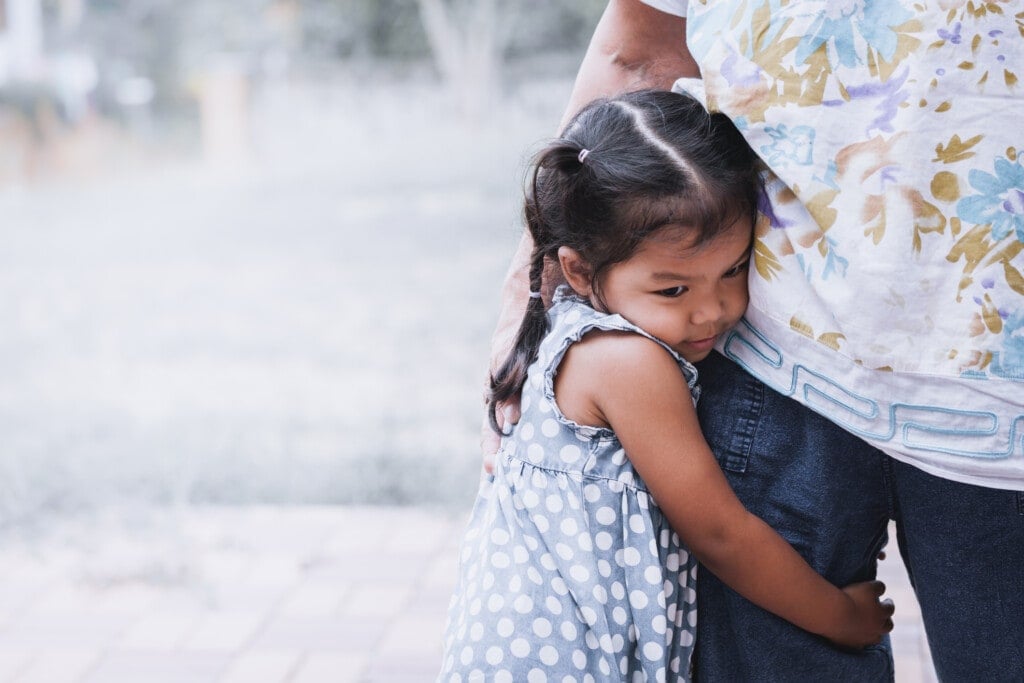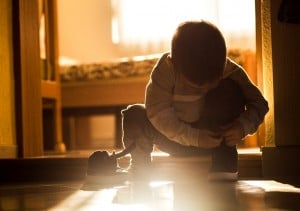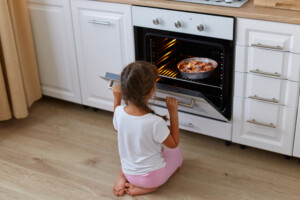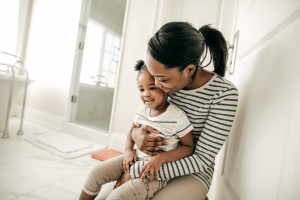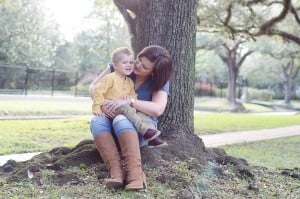Tears and tantrums as you say goodbye to your child can be stressful and heart-wrenching. It can make you feel like the worst mom in the world. Sometimes, it can keep you from doing things you need to get done without your kids. Take heart, mama. Separation anxiety is a normal and common occurrence for many children, and there are ways you can effectively handle it until your child outgrows it.
What Is Separation Anxiety?
Separation anxiety is when a child shows fear or distress at being separated from their primary attachment figure.3 It usually appears before 1 year of age, with a peak in presentation between 9 and 18 months of age.3 It varies significantly between individual children. Some become clingy but cope after an initial, short period of distress. Others become hysterical and overwhelmed until their parent or carer returns. Separation anxiety can also be coupled with a separate issue called “stranger anxiety,” where children become upset when new people are around or near them.4,5 This can appear around 7 months of age and typically peaks around 1 year of age.4
Anxiety and worries are a normal part of childhood; however, separation anxiety can appear out of the blue and without warning.6 Children become more mobile around 8 months old, and they suddenly realize the world is a vast place and they are tiny people.7 Separation anxiety is an essential fear because it ensures our children are cautious about leaving the safety of our side.
There is also a stage of development when children discover object permanence, which refers to the understanding that objects continue to exist despite not seeing, hearing, or otherwise sensing them. This is why peekaboo is such a fun game for our little ones.8 They are genuinely overjoyed at the trick Mom and Dad can do, hiding behind their hands and completely disappearing . . . magic! However, until children learn object permanence, they can be genuinely terrified that when you leave them, you may cease to exist. They also don’t fully understand when or if you will return.6
Parents Also Experience Separation Anxiety
Separation anxiety doesn’t only affect children; parents can experience it, too!9 Parenting is challenging and very emotional at times, particularly when your child is struggling or distressed. Anxiety around separating from your child can become anticipatory, meaning you come to dread drop-off times. Or it can stem from your discomfort or fears around leaving your child. These fears are normal; we are hardwired to protect our children. What better way to keep them safe than to keep an eye on them at all times?
However, normal development and life stages mean that children will enter formal care (child care, school, etc.) at some point, slowly developing their identity and need for independence. Learning how to separate from our children is a normal and essential part of childhood, for our benefit and theirs.
How To Handle Separation Anxiety
So, how can you support your child to separate without distress? Here are some tips for handling separation anxiety:
Slowly Introduce Your Child to New Places (Where Possible)
Begin with a no-pressure visit where you drive past the new place, show them pictures, etc. The idea is to pre-expose them to the place and help them cope with the idea that they will be going there (and you will be leaving them). This can help the place be more familiar and less fearful to them when the time comes for this change.
Bring a Safety or Comfort Item for Your Child
You can lend them a sense of security by bringing along something they already know is safe and makes them feel calm. This could be something like a stuffed animal they own or a soft, small blanket they like. You might even give them a picture of you to hold on to and look at.
Practice Makes Perfect
Start small and practice often, leaving when you know they are in a safe place.5,6 For example, you might say, “I just need to go into the kitchen for a minute,” to give them a chance to cope with separation anxiety briefly. Or leave your child with a carer while you run a short errand before leaving them for more extended periods.
Don’t Sneak Away From Them
Tell your child if you are leaving; do not, and I repeat . . . do not sneak away! This will add to their insecurity and fears that you are leaving them forever. It might feel easier to quickly leave when you see them distracted to avoid the emotional scenes. However, in the long term, it will leave them feeling more worried.11,12
Set Them up With an Enjoyable Activity Before You Leave
I’ve found that this works particularly well if you have used one of the steps above (about pre-exposing them to a new environment). For example, you can remind them of a great toy they enjoyed the last time they went somewhere or find an activity or person they connected with. This can help them transition to a new environment.
Even with small children, it’s essential to build their self-esteem and self-efficacy (the belief that they can achieve something).10 This gives them the confidence to cope with increased independence. You can give them tasks or objectives (asking them for help with something you are doing or independent self-care activities) that are developmentally age-appropriate to help them feel a sense of achievement and capability. Or you could have them make age-appropriate choices. For example, “What dish (give two options) do you want me to cook for dinner?” Or, “What pair of pants do you want to choose between?”
We instinctively want to look after our children and protect them. But we must also help them learn to be independent and cope with adversity and distress. Being a parent is tough, which means it’s also vital for you to look after yourself. Don’t forget to seek help, increase self-care, and be compassionate to yourself if you struggle with adjusting to increased independence or separation from your child.













